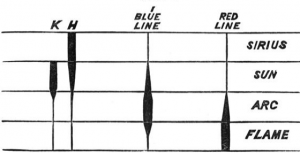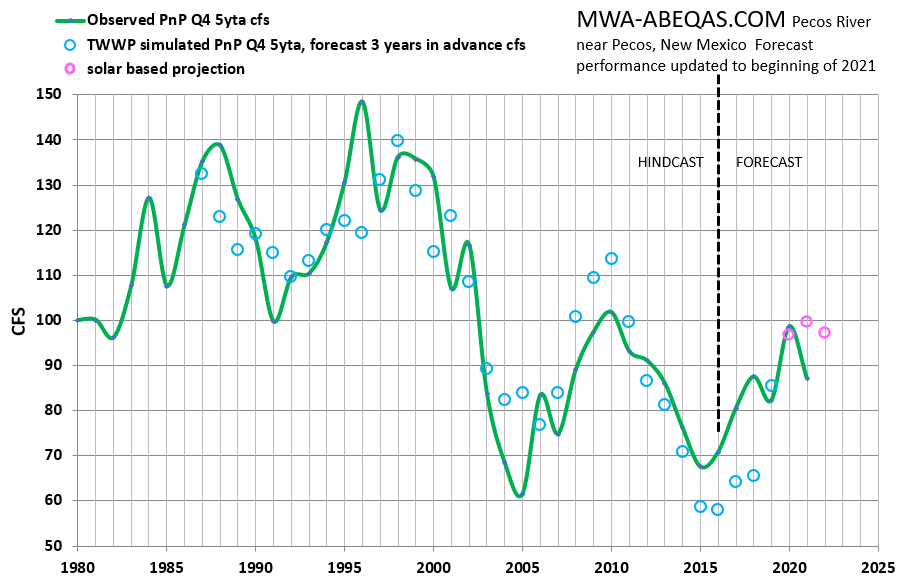
Greenhouse Gas Theory and Infrared Spectroscopy
Widespread references to notions by Arrhenius notwithstanding, I’m compelled to question whether or not there is an actual formal greenhouse gas theory (GHGT). Or is contemporary GHGT simply a variation of the basic principles common to widely used infrared radiation (IR) spectroscopy techniques?
In those spectroscopy techniques, gases in an atmosphere can be identified and quantified by their absorption spectra upon exposure to IR. Those spectra simply, accurately and routinely profile excitations in the signature baseline rotations, stretches, bends, and other vibrations of the inter-atomic bonds of several common molecules such as water vapor and carbon dioxide.
When the IR energy source is stopped, the interatomic bonds immediately return to their baseline vibration levels and orientations. There is no additional heat trapped because while the bonds were vibrating, they were emitting energy simultaneously via attenuation propagating through even longer wavelengths beyond the 666 cm^-1 wave number for CO2*. For what it may be worth, even for much larger organic molecules, steric hindrance is not expected to impede this energy attenuation, but I will keep my eye out for papers of relevance**.
So far as I know, these are not controversial statements to make concerning routine IR spectroscopy. Accordingly, it would follow that IR radiation emitted from the Earth is not trapped by gas molecules which can express a dipole moment (so called IR active greenhouse gas molecules such as water vapor and carbon dioxide). On the other hand GHGT claims the opposite [1]. Both cannot be right, but IR spectroscopy proves itself continuously in the applied sciences, while climate and hydrologic forecasts based on GHGT are typically extraordinarily inaccurate.
The more I look into this, the more it appears that there is no actual formal greenhouse gas theory. I took some time out from my normal hydroclimate and solar research at the local university library to search through the papers that are available beyond the paywall. The closest item which claims to document such a theory is in my view, “The Greenhouse Theory of Climate Change: A Test by an Inadvertent Global Experiment” by V. Ramanathan [2]. Already by 1988 the author claims “The radiative heating from this inadvertent experiment has driven the climate system out of equilibrium with the incoming solar energy”.
I will revisit this paper but for now it is clear that its contents utilize many principles of IR spectroscopy, without crediting those discoveries and without addressing attentuation. For example, a seminal paper on IR by J. N. Lockyer [3] in 1878, precedes Arrhenius by about two decades. As detailed by Robert French [4], Lockyer’s breakthroughs led to the wide and routine use of IR. The French paper summarizes that ” spectroscopy in the infrared (~0.7 um to ~300 um) wavelengths provides information about the temperature of objects and the composition of complex molecules”. It would be logical to search this contemporary summary for a discussion of the signature high profile use of IR spectroscopy practice to validate GHGT, but none can be found. I don’t mean to attribute words that were not spoken but perhaps GHGT was not discussed for the same reasons I led this post with.
I also could not find any discussion in the Ramanathan paper comparing solar cycles to any aspect of climate. Ironically one of the premier experts on solar cycle relations to the atmosphere’s temperature, K. Labitzke, is cited in the Ramanathan piece, but only with regard to purported volcanism effects upon climate. In my work, solar cycles show indisputable correlations with numerous aspects of our climate. That would not have been as clear at the time of the Ramanathan paper, but many contemporary papers on GHGT cite Ramanathan as the authoritative work on the topic to this day (over 400 citations and counting). Those modern references are accordingly equally dismissive of actual solar forcing potential.
I was also interested to explore Ramanathan’s claim that “When there is enhanced IR trapping, for example, as a result of an increase in the concentrations of gases shown .., excess energy is suddenly available to drive the climate system. The result, according to the theory, is a “vigorous” climate system, that is, a warmer globe with a more active hydrologic cycle.” My posts are largely about connections of the hydrologic cycle to solar cycles and any are invited to explore their real and robust relationships herein. If there were actually an established and real GHGT in any case, it would be expected to show even better correlations to hydrology than solar cycles. Instead the GH connections appear to be nonexistent (as I’ve already linked to).
GHGT incorrectly asserts that vast amounts of heat are absorbed by the radiatively active molecules in our atmosphere. As opposed to GHGT, there actually are several aspects of the atmosphere which do store and release significant amounts of energy. They can be and regularly are evaluated according to a true theory, the kinetic theory of gases (KTG). The KTG itself explains the Ideal Gas Law and its derivatives such as the hydrostatic equation.
I work under that theory since it is intrinsic to the QG methods featured in many of my posts to examine climate and weather***. Water is key, but not with respect to its purported greenhouse gas properties. Rather, in alignment with the KTG, water stores and releases energy via its latent heat properties. Those are indisputable, enormous, and used around the clock and around the world to support routine forecasts of temperatures, including dry bulb, wet bulb, and dew point temperature.
Another global atmospheric energy storage aspect which is much less studied, is associated with the gigantic ocean gyres (which this website also features in many additional posts). In my view and research, these gyres may amount to epic capacitors which store and release energy through their kinetic rotational expansions and contractions. Many metaphors come to mind, none fully satisfactory, but perhaps a flywheel is among the better choices. More aptly, one might consider a flywheel that constantly changes shape as it spins up and winds down. Gyres are typically dry as well, so their sensible heat storage features can nominally be separated from the latent heat of moist air.
I plan a series of posts on this GHGT topic and this is simply the introduction phase. I will likely update this post several times before it “settles in” as I do with most posts. I’m eager though to begin because many aspects of my work are coming together which relate.
Post Note: Many thanks to the Cruces Atmospheric Forum for their continued and patient indulgence of my informal arguments on this and many other aspects of climate and weather.
[1] https://www.ipcc.ch/ipccreports/tar/wg1/pdf/TAR-06.PDF
[2] Ramanathan, V., 1988, “The Greenhouse Theory of Climate Change: A Test by an Inadvertent Global Experiment” SCIENCE, New Series, Vol. 240, No. 4850 pp. 293-299.
[3] Lockyer, J. N. 1878, Proc. Royal Soc. London, 28, 157 http://rspl.royalsocietypublishing.org/content/28/190-195/157.full.pdf
[4] Robert S. French, 2011, “The History of Infrared Spectroscopy” HET607, Swinburne Astronomy Online http://www.rfrench.org/astro/papers/P44-HET607-RobertFrench.pdf
*This is the wave number most often cited by climate scientists to assert GHGT confirmation.
**Initial searches support this and show that IR spectroscopy can sometimes even be used to detect steric hindrance. See http://www.umsl.edu/~orglab/documents/IR/IR2.html
***Past posts, and future ones will also feature the remarkable ability of the QG approximation to explain atmospheric temperature in full, without recourse to GHGT.
 1663total visits,1visits today
1663total visits,1visits today


